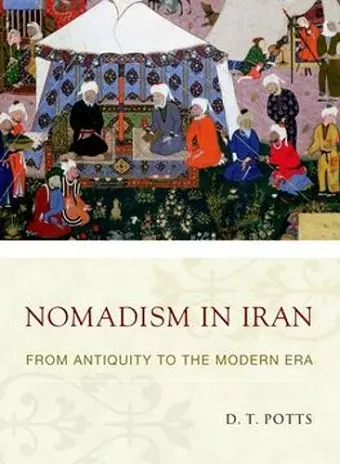Nomadism in Iran
From Antiquity to the Modern Era
Format:Paperback
Publisher:Oxford University Press Inc
Published:19th May '16
Currently unavailable, and unfortunately no date known when it will be back
This paperback is available in another edition too:
- Hardback£115.00(9780199330799)

The classic images of Iranian nomads in circulation today and in years past suggest that Western awareness of nomadism is a phenomenon of considerable antiquity. Though nomadism has certainly been a key feature of Iranian history, it has not been in the way most modern archaeologists have envisaged it. Nomadism in Iran recasts our understanding of this "timeless" tradition. Far from constituting a natural adaptation on the Iranian Plateau, nomadism is a comparatively late introduction, which can only be understood within the context of certain political circumstances. Since the early Holocene, most, if not all, agricultural communities in Iran had kept herds of sheep and goat, but the communities themselves were sedentary: only a few of their members were required to move with the herds seasonally. Though the arrival of Iranian speaking groups, attested in written sources beginning in the time of Herodutus, began to change the demography of the plateau, it wasn't until later in the eleventh century that an influx of Turkic speaking Oghuz nomadic groups--"true" nomads of the steppe--began the modification of the demography of the Iranian Plateau that accelerated with the Mongol conquest. The massive, unprecedented violence of this invasion effected the widespread distribution of largely Turkic-speaking nomadic groups across Iran. Thus, what has been interpreted in the past as an enduring pattern of nomadic land use is, by archaeological standards, very recent. Iran's demographic profile since the eleventh century AD, and more particularly in the nineteenth and twentieth centuries, has been used by some scholars as a proxy for ancient social organization. Nomadism in Iran argues that this modernist perspective distorts the historical reality of the land. Assembling a wealth of material in several languages and disciplines, Nomadism in Iran will be invaluable to archaeologists, anthropologists, and historians of the Middle East and Central Asia.
Potts has written a sweeping ouvrage on the involvement and influence of nomads, semi-nomads, and tribes in shaping Iran's past and present. * Journal of the American Oriental Society *
Nomadism in Iran stands as a magisterial synthesis of the role of nomadism from Iran's pre-history through the 20th century. Based upon critical and exhaustive reading of material and textual evidence, this path-breaking book challenges our thinking as it clearly narrates and analyzes the fundamental changes in nomadism over the course of that long history. * G. R. Garthwaite, Dartmouth College *
Daniel Potts has produced a masterly history of nomadism in Iran since prehistoric times. His demolition of archaeological orthodoxies is impressive: in particular, he shows that nomadism came to Iran millennia later than supposed, and that reconstructing ancient nomadic societies by extrapolating from recent ethnographic studies is methodologically invalid and highly misleading. * Richard Tapper, SOAS, University of London *
offers a broad historical synthesis of pastoralism across the ages, accompanied by extensive bibliographic notes. It addresses a general need for more accessible literature on the political role of nomads, and includes considerable detail on specific transformative moments in the history of Iranian nomadism ... timely and engaging. The accessibility of Potts's book underlines that there is no longer any excuse to omit case-studies of Eurasian transhumant populations from discussions of global political development. * Paul Wordsworth, English Historical Review *
ISBN: 9780190600594
Dimensions: 231mm x 155mm x 38mm
Weight: 862g
592 pages